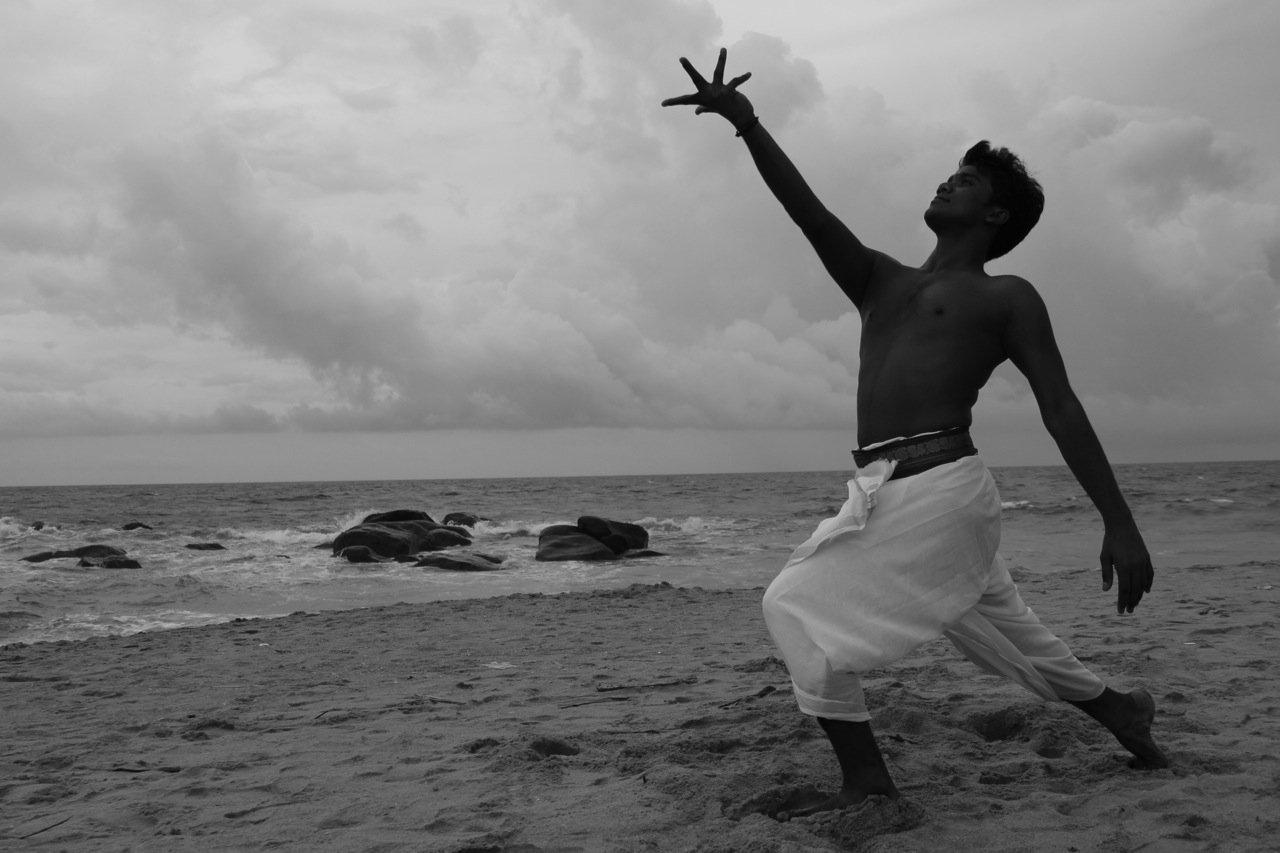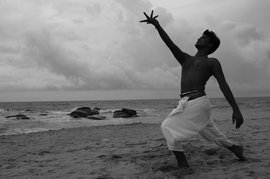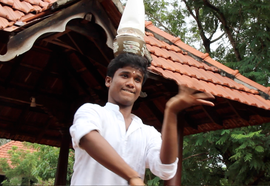"Akka, you are cordially invited for my exam kutcheri . Please grace the occasion with family and friends," Kali Veerapadran told me when he phoned to invite me for his final examinations at Kalakshetra, India's premier dance school in Chennai. And, after a two-tick pause, he asked me, softly, "is that correct English, akka ?"
Kali was unsure because he wasn't very familiar with English until about four years ago. Then again, he wasn't that familiar with dance either. But now he's mastered the very classical Bharatanatyam as well as Karagattam, Thapattam and Oyilaatam, three ancient folk dances of Tamil Nadu. And he's learnt all of them from the best in the business.
Kali's family, who he describes as Hindu Adi Dravidars (a Dalit community), are based in Kovalam, a struggling fishing village near Chennai. Kali, 21 years old, lost his father very young. "I was perhaps six or seven months old then," he says, without much emotion. His emotions are reserved for his widowed mother, who then took on the huge task of raising a large family on a porter's daily earnings. "I have three elder sisters and two brothers. When one brother died of brain fever, I went from my grandmother's house – where I had lived until then – back to my mother's."
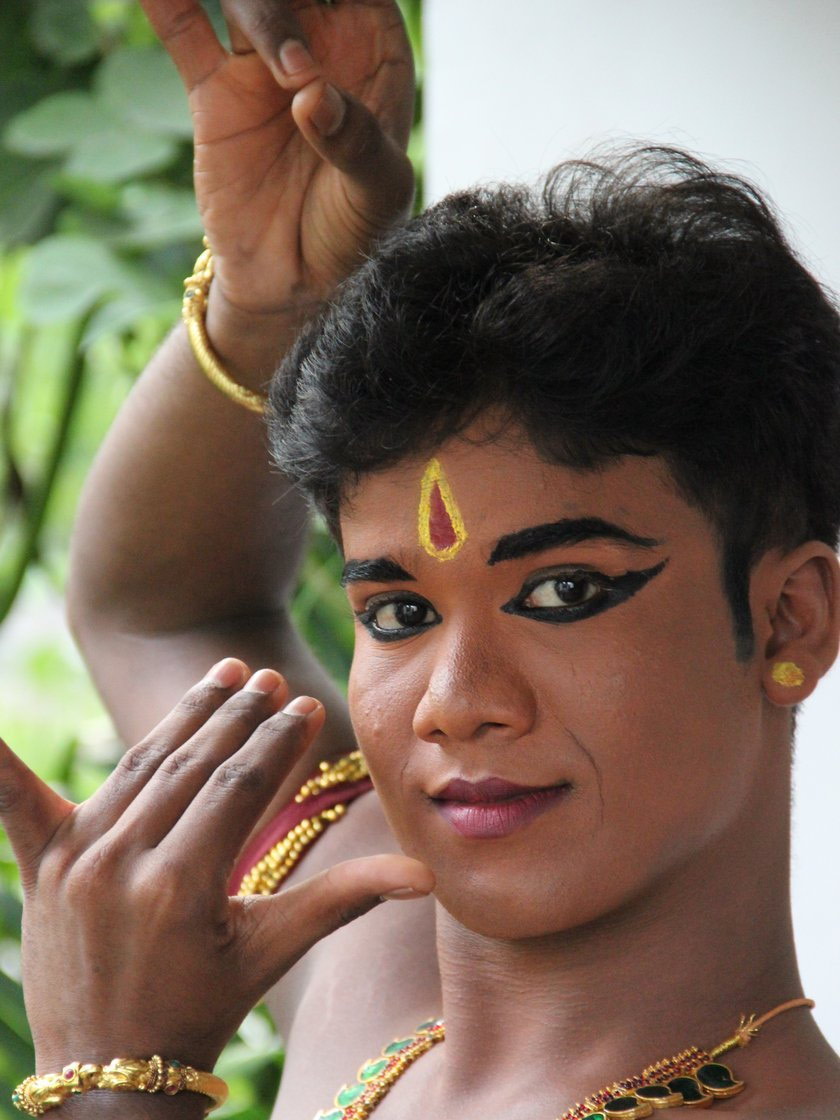
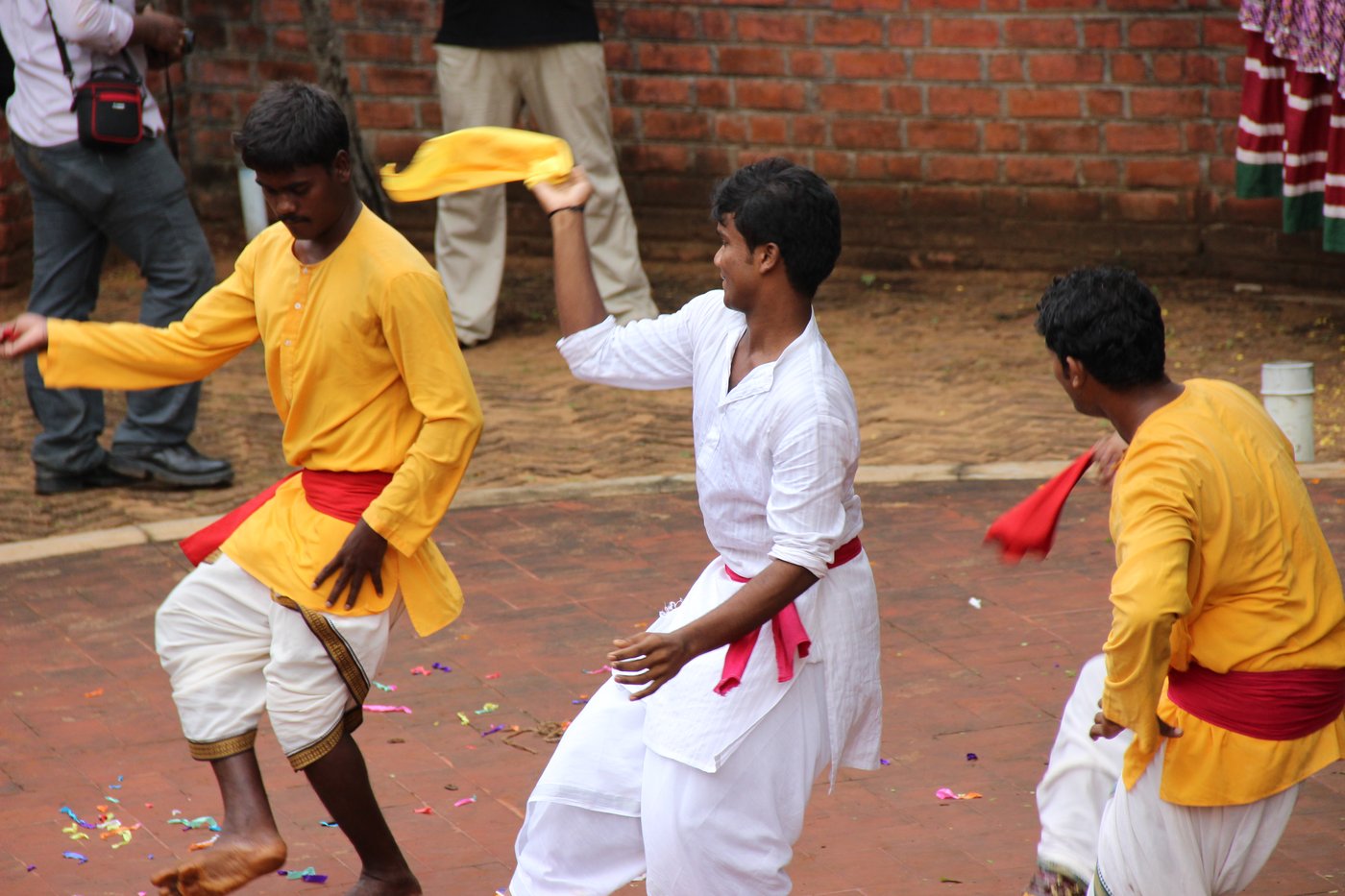
Left: Kali gets ready for a Bharatanatyam performance. Right: Performing Oyilaatam in Dakshinchitra
His mother's house wasn't the pucca one it is today. It did badly even in Chennai's usually meagre monsoon, and the government then pitched in with a solid roof over their heads. Kali is grateful for that, just as he is to every single person who has helped him live his dream.
Kali's dream is to dance, which in itself might not be unique. Except, Kali wants to excel in two very different styles of dancing, two styles that normally mix about as well as oil and water. One of them is Bharatanatyam – a very structured and classical art form, previously practiced by the
devadasis
(young women dedicated to temples and its priests for life), and today, ironically, patronised mostly by the upper castes and the moneyed, who once shunned them. The other is 'folk-dance', a term that loosely clubs several centuries-old dance forms that originated – and are still practiced – in Tamil Nadu's villages.
As a rule, Bharatanatyam dancers do not master folk dances, unless their production calls for a dash of karagam or kavadi . Very few have undergone rigorous training, let alone performed these professionally. Kannan Kumar, Kali's folk dance teacher (the only such full-time teacher in all of Tamil Nadu) explains that folk dance is like a foundation or a wall, and the cerebral Bharatanatyam – which uses mudras to tell a story – is like a painting on it. The two, he believes, can complement each other. And Kali goes a step further – he practices both, without any conflict.
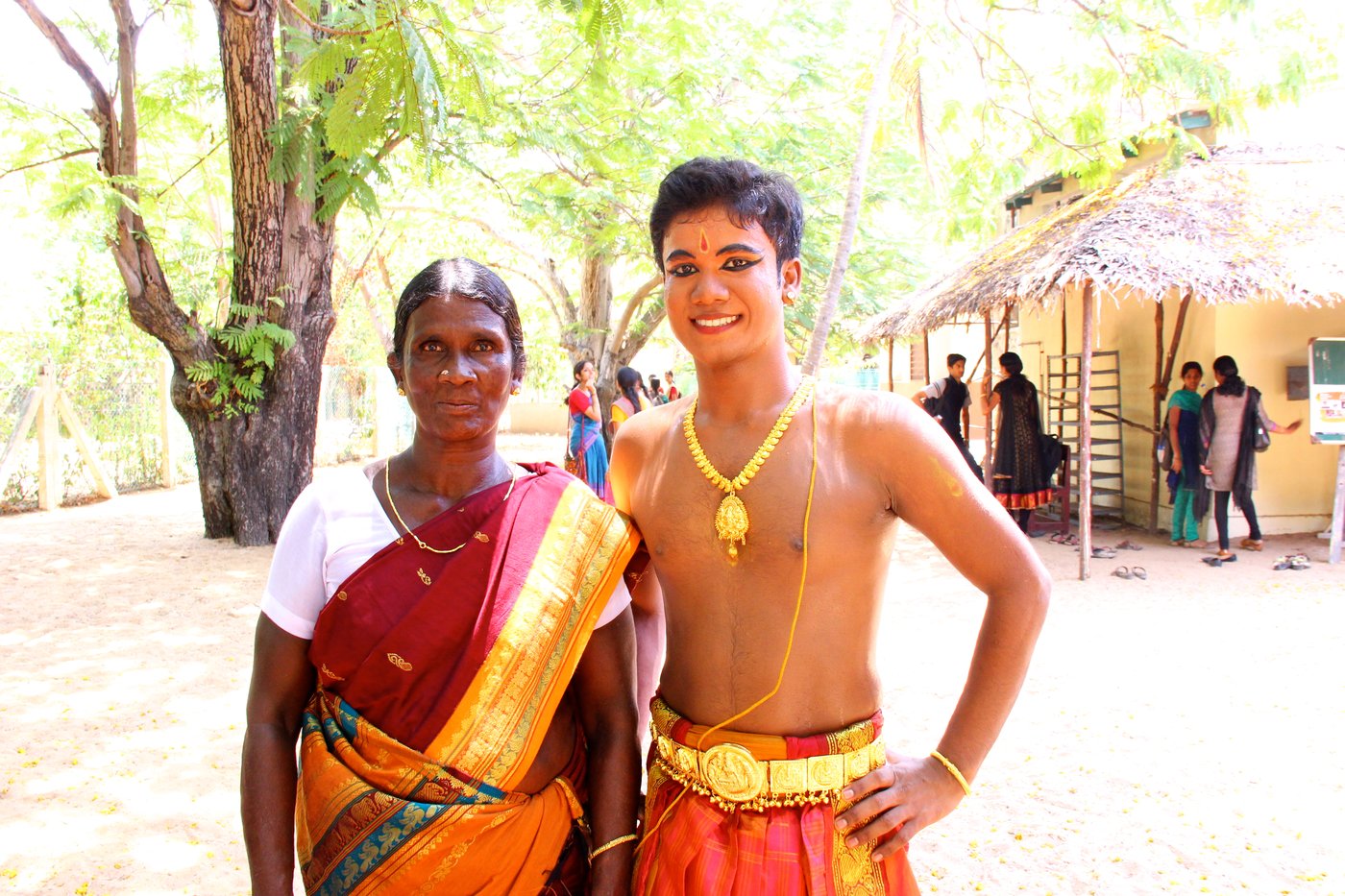
Ellamalli, Kali's mother, visiting Kalakshetra to watch his exam kutcheri
In fact, the only time Kali faced a conflict was when he completed his school board exams – he wasn't at all sure what he wanted to do. The most obvious and sensible option was to take up a job; his family's finances called for help. But just then, his aunt told him about free folk dance classes at Dakshinchitra, a heritage museum of South India, not far from Kovalam. One look, and Kali was smitten. He progressed very rapidly in his classes, and mastered, in two months, Karagattam, Oyilattam and Thapattam. Kannan Kumar was pleased, and began teaching him the fourth dance, Devarattam. Only, just then, Kali got into Kalakshetra, for a four-year diploma course in Dance.
A few years earlier, Kali had not even heard of Kalakshetra. It was Sarah Chanda (who went on to sponsor him) who first recognised the passion with which he danced in a Tsunami Rehabilitation Centre at Kovalam. She told him that he should learn the art formally at Kalakshetra. Kali cleared the interviews – even though distant aunts and uncles actively discouraged him from pursuing so 'sissy' a thing as dance – and got his admission. He had crossed one set of hurdles. The next lot was already waiting.
For a boy from a Tamil medium school, with little or no exposure to Bharatanatyam and classical music, Kalakshetra seemed very daunting in the beginning. The food was strictly vegetarian – lacking in the meat he was used to; and his stamina was appalling. "I was a fat boy then!" Kali laughs, and shows me how he used to dance, with his bottom stuck out, his feet splayed and his hands wonky. He was little better than any of the (many) foreign nationals on campus – he was only as culturally attuned as they were, and moreover, suffered from a serious inability to communicate in English.
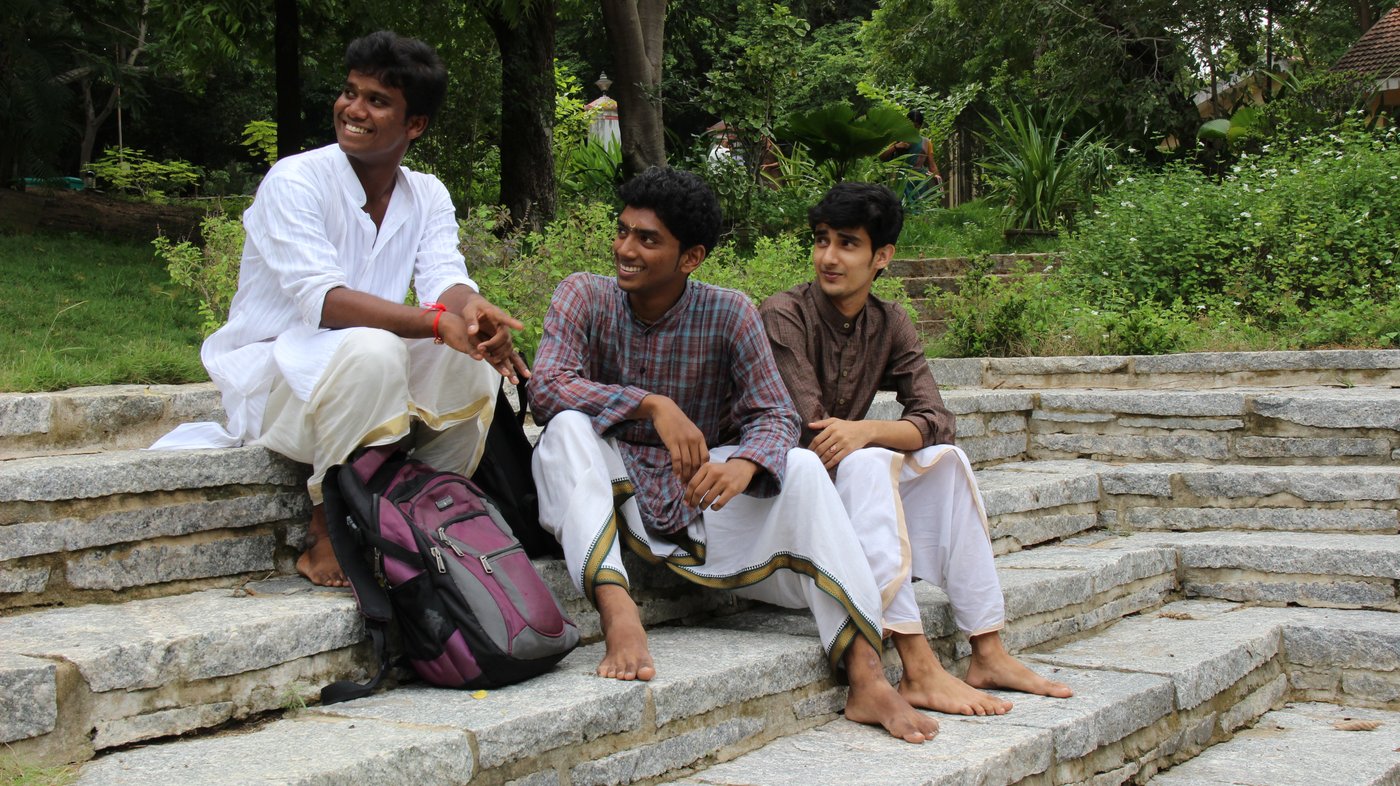
Between classes, Kali with his friends, at Kalakshetra's beautiful, green campus
So he took to dancing. He used gestures in the place of words. Soon, he got over his shyness, and, in fact, roped in a bunch of non-Indians for the first-year student's day, where, at his urging, Russian and South African students danced the Oyilaatam. Kalakshetra's then director Leela Samson appreciated his effort. And, to top it all, he topped his class. His confidence grew, and so did his knowledge.
Now, Kali can identify
ragas
in a trice. At performances in the sacrosanct Rukmini Arangam, named after the legendary dancer and founder of Kalakshetra – Rukmini Devi Arundale – he guesses
ragas
and asks one of his many friends if he is right. He usually is. And his dance has come far from those inelegant, early days – his
adavus
(steps) are precise, and his
baavam
(expression) perfect.
It was at the Rukmini Arangam that his exam kutcheri ( recital) took place, on the March 28, 2014. His batch of eight students performed an entire margam (set of dances, performed in a sequence) on stage, with full make-up. His class-teacher, Indu Nideesh, who had trained him and his classmates, kept beat on the nattuvangam . She must have been proud of her class; the audience sure was.
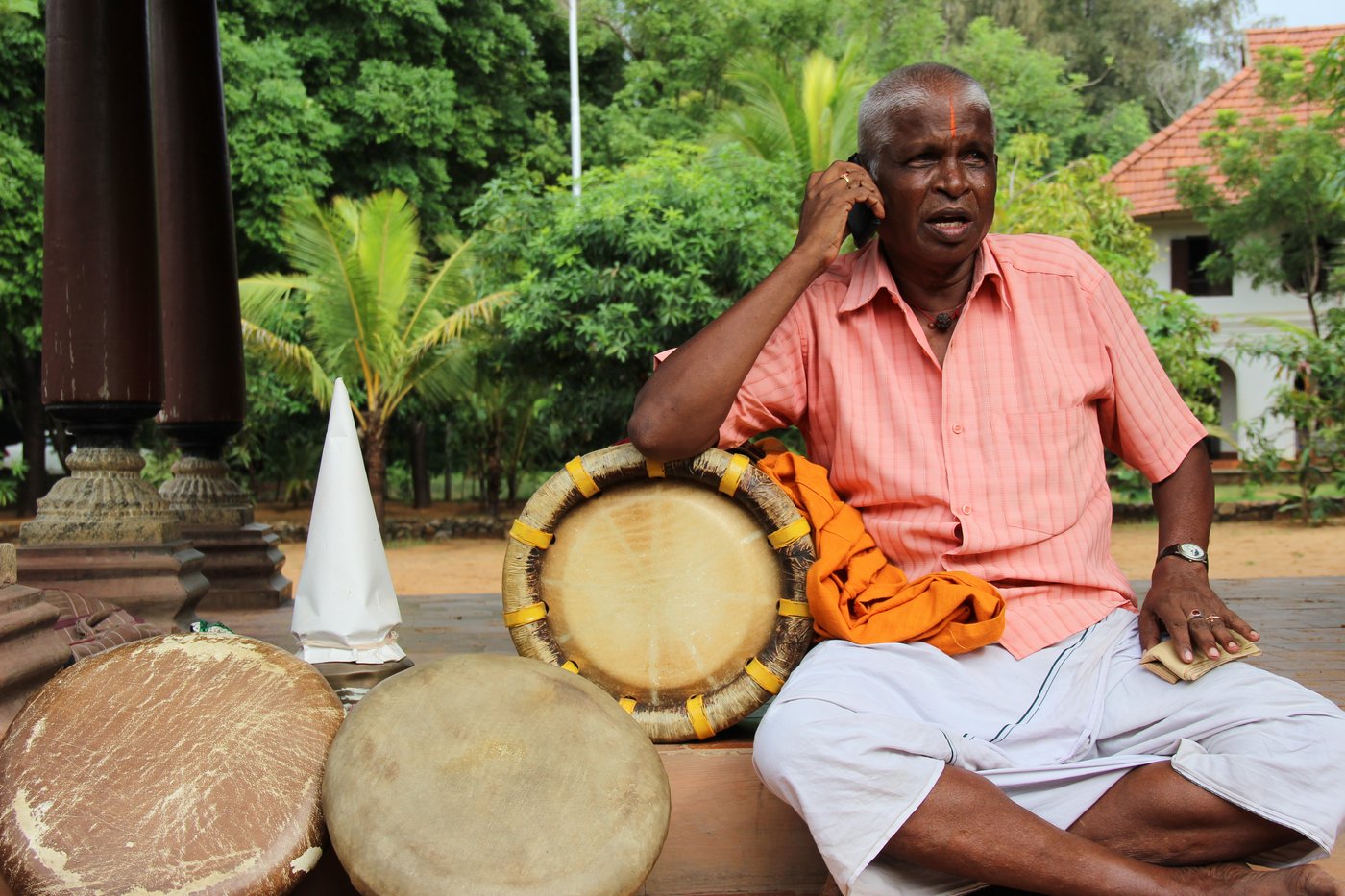
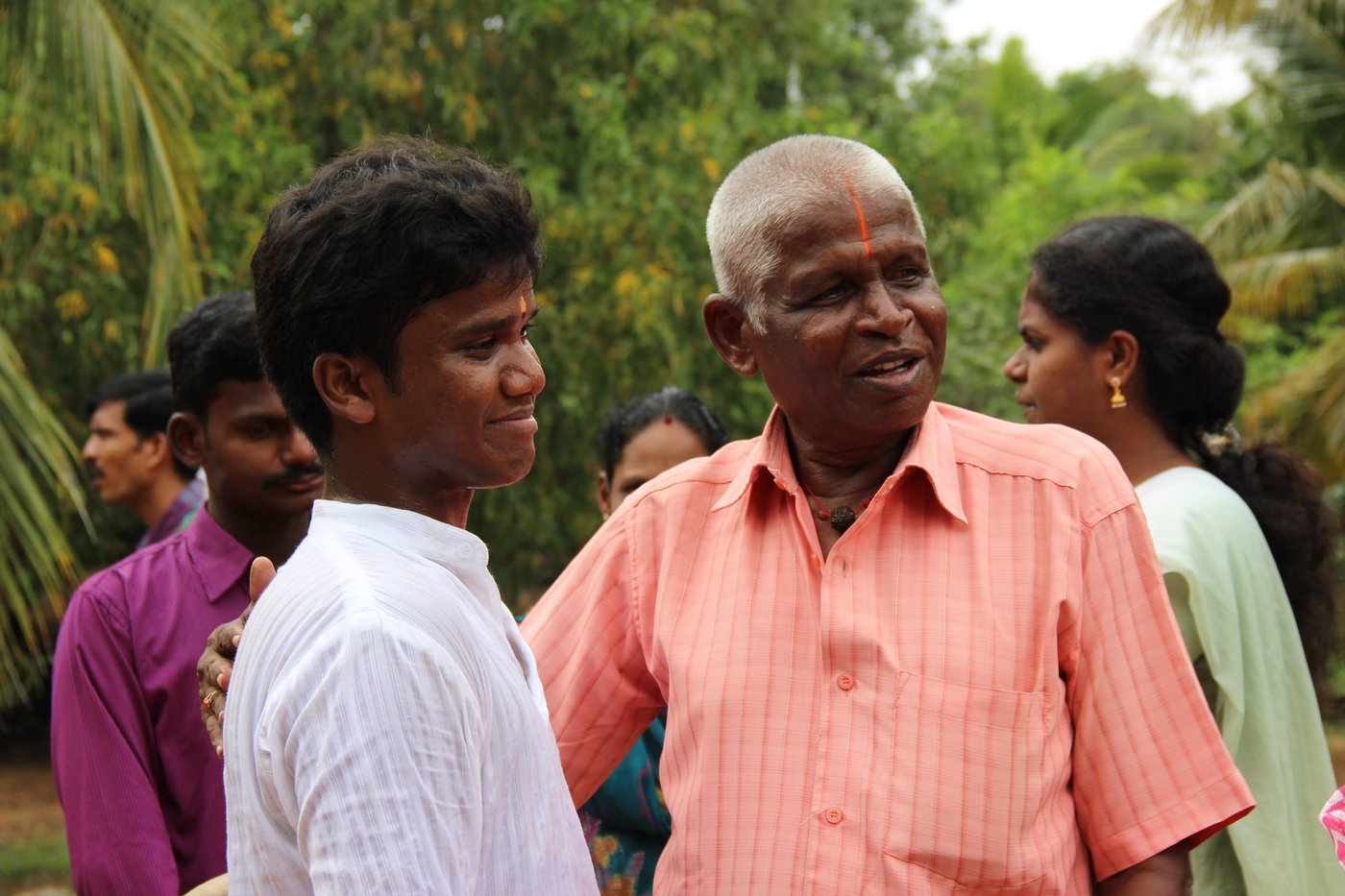
Kannan Kumar, perhaps the only full time folk dance teacher in Tamil Nadu, praises Kali's commitment to both folk and classical dance
Kali's mother, his brother Rajini (who runs an
idli
shop in Kovalam), his three sisters and their families, their friends –
they had all come to Kalakshetra for his
kutcheri
. When I went up and congratulated Rajini on Kali's splendid performance, he said, matter-of-fact, "We don't understand all this dancing. We just sat here, outside. It's nice that you found it good". Kali had, by then, come out to see them. He hugged his mother, posed for photos with his family. But his friends were calling him for class photos. As he ran inside, he saw Kannan Kumar. He flung himself at his feet. His teacher picked him up by his sweaty shoulders and held him. There was much pride in the teacher's eyes, and much happiness in the student's.
"I'll never let go of either art form," Kali says, happy and relieved his exams are over. He is ecstatic when he gets news that he has got a first class, and delighted when he's accepted into the postgraduate diploma course in Bharatanatyam at Kalakshetra. And now, Kali is even more determined to do his bit for the folk dances, which he says are facing extinction. He also wants to make Bharatanatyam more accessible to people who would otherwise not experience its beauty. "One class folk, one class Bharatam. I want to teach both, I want to set up a dance school, I want to earn money, I want to look after my mother, I want to dance." The young dancer lists his dreams
Watch the video 'Kali: the dancer and his dreams': https://ruralindiaonline.org/articles/kali-the-dancer-and-his-dreams
